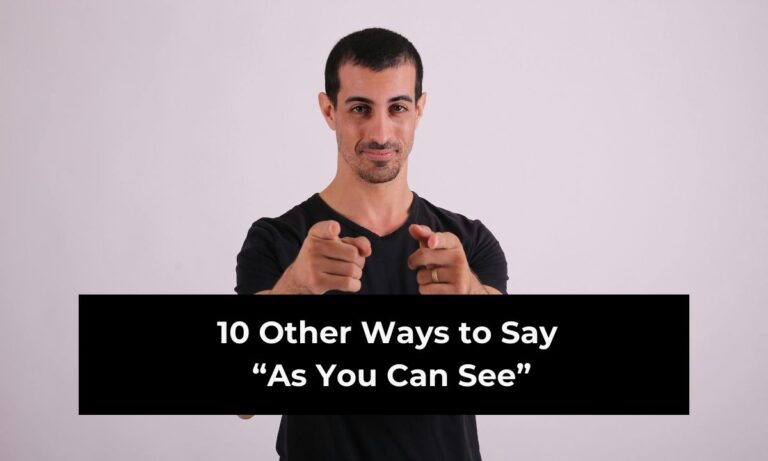You’ve probably been told at some point to start your essay with, “In this essay, I will…” It’s direct. It’s clear. But let’s be honest — it’s also a little dull. When you start your paper this way, you’re giving away your structure before your reader even has a chance to feel curious. The opening line is your chance to grab attention, spark interest, and set the tone for what’s ahead.
Think about it. Your reader — whether it’s a teacher, professor, or someone reading for pleasure — is looking for a reason to keep going. They want to know that your writing will be worth their time. That first sentence should feel like an invitation, not a roadmap someone’s already walked.

By replacing “In this essay, I will” with something more engaging, you’re showing your personality as a writer. You’re building trust that you can guide them through your ideas without spoon-feeding every detail up front. This isn’t about being vague — it’s about drawing them in with confidence and style.
In this guide, you’ll discover ten fresh, professional, and reader-friendly alternatives to “In this essay, I will.” Each option comes with examples and tips for when and how to use it. These phrases work for academic papers, persuasive essays, personal narratives, and even creative nonfiction.
By the end, you’ll have a toolkit of openers that make your essays stand out from the very first line — without feeling awkward or forced.
So, if you’re ready to replace a tired cliché with language that truly reflects your voice, let’s dive into the possibilities.
1. “This paper explores…”
Sometimes the simplest fix is to swap your wording while keeping the clarity. “This paper explores…” tells the reader exactly what’s coming, but it sounds more polished and academic than “In this essay, I will.”
Instead of presenting your intentions in a casual tone, you’re positioning your writing as a purposeful piece of work. This works especially well for research papers, analytical essays, and literature reviews.
Example:
This paper explores the connection between climate change and urban planning, highlighting the urgent need for sustainable infrastructure.
Notice how this phrasing still introduces the topic without sounding like a middle school writing prompt. It implies that your work is the result of careful thought and investigation.
Tips for using this opener:
- Use it when your audience expects a clear statement of focus.
- Follow with a brief explanation of your scope or key points.
- Keep the sentence concise so it leads naturally into your first argument or background section.
By framing your work as something that “explores” rather than something you “will do,” you invite the reader to join you in a journey of discovery, rather than simply telling them what’s about to happen.
2. “The purpose of this essay is to…”
If you want to keep things extremely clear, this phrase works well — especially in academic settings where your goal needs to be explicit. It’s formal but still approachable.
Example:
The purpose of this essay is to examine the ethical implications of artificial intelligence in healthcare decision-making.
This phrasing leaves no doubt about your aim, but it avoids the predictable rhythm of “In this essay, I will.” The word “purpose” signals intention and direction.
Why it works:
- It establishes your central objective immediately.
- It works for persuasive, argumentative, or expository essays.
- It sets a professional tone without being overly stiff.
To keep it from sounding too mechanical, follow it up with an intriguing hook or surprising fact related to your topic. For instance:
The purpose of this essay is to examine the ethical implications of artificial intelligence in healthcare decision-making. As algorithms become more involved in patient care, the line between technology and humanity blurs in ways we’ve never faced before.
This way, you deliver clarity and a reason to keep reading.
3. “This discussion focuses on…”
“This discussion focuses on…” works beautifully when your essay takes a conversational or exploratory tone. It implies that you and the reader are examining an idea together, rather than you lecturing them.
Example:
This discussion focuses on the hidden biases in hiring practices and the ways they shape workplace diversity.
The word “discussion” softens the academic tone, making it suitable for personal essays, blog-style writing, or reflective pieces. It suggests openness, as if you’re inviting the reader to consider different perspectives.
Best uses:
- Opinion pieces or reflective essays.
- Situations where your writing style is more narrative than formal.
- When you want the reader to feel part of the process rather than a passive observer.
It’s also a good choice if you’re blending research with storytelling. By positioning your essay as a “discussion,” you create a more engaging atmosphere while still signaling what’s to come.
4. “Here, we examine…”
This phrase immediately makes the reader feel included. The “we” suggests partnership, as if you’re guiding them through your thought process.
Example:
Here, we examine the rise of remote work and its long-term effects on urban economies.
It works especially well in collaborative or co-authored pieces, but you can also use it in solo essays to create a sense of shared purpose.
Advantages of this opener:
- Builds rapport between writer and reader.
- Makes technical or research-heavy topics feel approachable.
- Can transition smoothly into evidence or analysis.
To make this style effective, follow with details that pull the reader in quickly. Avoid being too abstract — the strength of “Here, we examine…” lies in pairing it with a precise subject.
5. “The following analysis will…”
When your essay is heavily analytical, this phrase adds authority. It positions your work as more than just an opinion — it’s an evaluation, breakdown, or interpretation of something meaningful.
Example:
The following analysis will explore how narrative voice shapes reader perception in Gothic literature.
This opener is perfect for literature essays, data interpretation, or any writing where you’ll be dissecting something in depth.
Why it works:
- Conveys a sense of structure and seriousness.
- Signals that evidence and critical thinking are central to your essay.
- Helps transition naturally into your thesis statement.
By using “analysis,” you’re promising insight rather than just a summary — which instantly makes your work more compelling.
6. “In exploring [topic], this essay will…”
This hybrid structure keeps some of the directness of the original phrase but upgrades it with a more active, engaging tone.
Example:
In exploring the psychology of procrastination, this essay will uncover why we delay important tasks and how to overcome it.
By placing the focus on the act of exploring, you create curiosity. The reader isn’t just being told what will happen — they’re being invited to come along for the ride.
Pro tip:
Follow this opener with a brief hint at your key findings or main argument. That way, you keep the forward momentum while still building intrigue.
7. “This study investigates…”
If your writing is research-heavy, “This study investigates…” is a professional and precise way to open. It’s a favorite in scientific, sociological, and academic research contexts.
Example:
This study investigates the effects of daily mindfulness practice on stress reduction in college students.
It implies that your essay is rooted in data, observation, or formal inquiry. This can help establish credibility right away, especially with a scholarly audience.
How to use it effectively:
- Be specific about what’s being investigated.
- Keep the statement concise to avoid overwhelming the reader with jargon.
- Lead quickly into your methods, background, or reasoning.
This opener is ideal when your writing leans toward formal research papers or dissertations.
8. “The aim of this paper is to…”
Similar to “The purpose of this essay is to…,” this phrase makes your intention clear while sounding polished and professional. The word “aim” can feel slightly softer and more approachable than “purpose.”
Example:
The aim of this paper is to compare renewable and non-renewable energy sources in terms of environmental impact and cost efficiency.
It’s a straightforward, no-nonsense way to set the stage while still avoiding the repetitive “In this essay, I will.”
Best for:
- Academic essays with clear objectives.
- Comparative studies or evaluations.
- Formal reports and presentations.
9. “This article addresses…”
“This article addresses…” works perfectly for essays that aim to solve a problem, answer a question, or clarify a misconception. It positions your work as a direct response to an existing need.
Example:
This article addresses the myths surrounding plant-based diets and clarifies the scientific evidence on their health benefits.
It’s professional, focused, and suggests that your writing serves a practical purpose.
Tips:
- Use when tackling controversial or misunderstood topics.
- Follow with a clear thesis or central claim.
- Pair with evidence and explanations that support your role as a problem-solver.
10. “Throughout this paper, I will demonstrate…”
This option works well when your essay’s primary purpose is to prove a point. The word “demonstrate” suggests a combination of reasoning and evidence, making it ideal for argumentative or persuasive writing.
Example:
Throughout this paper, I will demonstrate how early exposure to reading influences language development in young children.
It’s clear, confident, and positions your argument as something you can prove, not just suggest.
Why it works:
- Signals a logical, evidence-based approach.
- Creates an expectation of persuasive reasoning.
- Works across academic, persuasive, and informative essays.
Conclusion
Swapping out “In this essay, I will” for a more engaging alternative isn’t just about avoiding cliché — it’s about taking control of your reader’s first impression. The way you open your work can set the tone for everything that follows.
Whether you choose something formal like “The purpose of this essay is to…” or conversational like “Here, we examine…,” the key is to match your opener to your topic, audience, and tone. Think about the role you want to play in your reader’s mind: Are you a guide, a partner in discussion, a researcher, or a storyteller?
Strong openers grab attention without oversharing, hint at your direction without giving away all the details, and build trust that your ideas are worth exploring. By using these ten alternatives, you’ll not only sound more professional but also create a more inviting and impactful reading experience.
Next time you sit down to write, resist the urge to fall back on “In this essay, I will.” Instead, pick a phrase that reflects your voice, your confidence, and your unique angle on the topic. Your readers will thank you — and they’ll be much more likely to stick with you until the very last sentence.
FAQs
1. Why should I avoid saying “In this essay, I will”?
It’s overly predictable and can make your writing sound basic or repetitive. Stronger openers create curiosity and professionalism.
2. Can I still use it in school essays?
Yes, but you’ll make a stronger impression if you use a more engaging alternative.
3. Are these alternatives acceptable in formal writing?
Absolutely. Many of these phrases, like “This paper explores…” or “The purpose of this essay is to…,” are common in professional and academic contexts.
4. How do I choose the best alternative?
Match the tone and purpose of your essay. For research-heavy work, go formal; for reflective or narrative pieces, choose something more conversational.
5. Will changing my opener improve my grade?
It can help. A strong opener can set a positive tone and show that you’re thinking about your audience, which teachers often appreciate.





